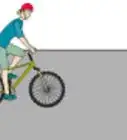This article was co-authored by Ikaika Cox. Ikaika Cox is the Shop Director at the Salt Lake City branch Bicycle Collective in Salt Lake City, Utah. He has been a bike mechanic since 2012, beginning as a volunteer with the Provo Bicycle Collective, and growing and honing his skills as a bicycle mechanic and educator in multiple Bicycle Collective locations over the years. He now leads the Salt Lake City branch of the Bicycle Collective.
There are 12 references cited in this article, which can be found at the bottom of the page.
This article has been viewed 29,507 times.
Mountain biking is an exhilarating and physically challenging activity. When biking downhill, it's important to properly distribute your weight in order to control your bike. It's also essential that you purchase biking equipment that is made specifically to withstand the stress of biking down a hill with uneven terrain. Once you have the proper equipment and understand the basics, going downhill on your mountain bike is a blast!
Steps
Controlling Your Bike Downhill
-
1Look as far down the trail as you can. Looking far in front of you will enable you to anticipate changes in the trail. This will give you enough time to adjust to bends or changes in the trail. If you get distracted and concentrate too close in front of you, micro adjustments and hesitation could cause you to wipe out.[1]
-
2Commit to riding down the hill once you enter the decline. Instead of second-guessing yourself, go fully into the hill and keep your wheels turning. Occasionally feather the brakes to slow down when you come to slight bends in the road, but don’t try to come to a complete stop until you're on level land.[2]
- Hesitation could cause you to fall off your bike when going down a steep hill.
- You might be scared at first, but committing to a hill is the safest way to ride down it.
Advertisement -
3Distribute your weight to the outside of the bike as you turn. When you turn, your outside foot should be in the down position, your inside pedal should be up, and your weight should be distributed to the outside of your bike. This will prevent you from taking corners too sharply and falling off your bike.[3]
- Your weight should be evenly distributed between your front and back tire during turns.
-
4Drop your weight on the back of the bike when going down a steep hill. Hold the handlebars and lift your butt off the back of your seat. Plant your heels down onto your pedals, adjust your hips, and drop your weight onto the back of your bike. This will prevent you from tipping over the handlebars when going down a steep hill.[4]
- Keep your elbows and knees loose (slightly bent rather than locked) to avoid bumps and jostling that could affect your control of the bike.
-
5Learn how to drop on a mountain bike. When approaching a drop in terrain, you should be elevated over your seat, your chest should be lowered, and your arms and legs should be bent. As you go over the cliff, lower your hips, put your weight on the back of the bike and push off your handlebars.[5]
- The drop technique will safely guide you over small cliffs as you ride downhill.
- Try to land on your back wheel or both wheels when doing this maneuver.
- As you go over the drop, keep your knees and elbows dynamic to compensate for the impact.
Prioritizing Safety as a Beginner
-
1Practice on easy biking trails first. Most mountain bike trails will have a grading system that signifies their difficulty. This grading system can usually be found at the start of a trail or at the park’s information booth. If you're new to downhill biking, choose one of the lower difficulty trails before trying an intermediate or difficult trail.[6]
- Lower level tracks will be relatively straight with limited curves and bumps.
- Intermediate and advanced tracks may have steep drop-offs, narrow tracks, and obstacles blocking your way.
- Only go down an advanced track if you're an experienced mountain biker.
-
2Walk on the side of the trail if you need to stop. Don't stop in the middle of a trail. If you need to take a break or examine an obstacle, walk off to the side of the trail first. This will prevent other riders from colliding with you.[7]
-
3Stop and examine an obstacle if it’s too difficult. It’s okay to stop the bike and walk it over a portion of the trail that you find too scary to do, like a steep drop off or an obstacle. Make sure that you walk on the side of the trail, out of the way of potential bikers behind you.[8]
- Examining an obstacle on a trail can actually help you better understand it the next time that you ride down the trail.
-
4Call out which side you're passing on. If you are passing someone on the trail, say "To your left" or "To your right," depending on which side you want to pass on. This will give the biker in front of you enough time to get to the side of the track.[9]
- Alternatively, you can use a bicycle bell to communicate with other trail users.
- If someone coming up behind you says "To your Left" or "Left," get to the right of the track so that they can safely pass you.
-
5Stay tight against the bike if you're going to fall. Try to fall on the side while keeping your body close against the bike. This lets the pedal and handlebars absorb the bulk of the impact. The natural instinct to bail off the bike and land with your hands out can cause wrist and hand injuries.[10]
-
6Increase your speed gradually on tracks you’re familiar with. Once you become more accustomed to the curves, bumps, and intricacies of a track or course, you can increase your speed on the track. After you master one trail, you can move onto more difficult ones.[11]
Getting the Proper Equipment
-
1Purchase or rent a full suspension downhill bike for intermediate or advanced trails. Full suspension downhill bikes have sturdy suspensions that can withstand the bumps and drops from a downhill mountain bike course. They are heavier than hybrid and road bikes and are built specifically for rugged mountain bike trails.[12]
- You can purchase or rent a full suspension downhill mountain bike at a bike store.
- If you're a beginner and want to try blue or green trails, you can use any bicycle. However, as you become more advanced, a full-suspension bike is ideal.
-
2Buy a helmet. If you’re planning on mountain biking downhill on advanced trails, you’ll want to purchase a helmet that can protect the front of your face if you go over the handlebars. The helmet should feel light and secure and should not obstruct your view in any way.[13]
- Try the helmet on at a bike store to ensure that it fits.
-
3Wear goggles to protect your eyes from debris. Goggles will block dirt or dust that may blow into your face as you go downhill. Your helmet should fit comfortably over the goggles. [14]
-
4Purchase biking clothing. Purchase tighter fitting, non-cotton performance or cycling clothes that wick sweat. The material in bike clothes helps regulate temperature and are made to fit your body in the cycling position.[15]
- Performance or biking clothes can be found at bike stores or online.
- Popular brands of cycling clothes include POC, Mavic, and Benard.
- Baggy clothing can get caught in the chain or gears of your bike, but it's usually fine to wear comfortable clothes if you don't have anything designed specifically for biking.
-
5Wear protective armor over your clothes when going down advanced trails. Knee pads, elbow pads, or even full body armor will help minimize injuries if you fall off your bike. If you are going down more advanced tracks, buy biking armor online or at a biking store.[16]
-
6Tailor your tire pressure and suspension to the track. If you are biking on wet ground, you can set your bike to a slightly lower suspension to get more grip on the trail. If you are going along dry ground, set your suspension higher to achieve higher speeds.[17]
- Play around with both of these settings on your bike and find a setting that feels comfortable for you and the trail you’re riding on.
- Proper mountain bike suspension should sit about ⅓ of the way down when you sit on the bike on dry terrain.
-
7Bring water and snacks. Water is an absolute essential, so don't forget to fill up and bring a few bottles or a water bladder when you go riding. Snacks like granola bars or trail mix are great to have on hand as well.
References
- ↑ https://www.bike198.com/faster-downhill-mountain-biking/
- ↑ https://youtu.be/EhnIo21hi0g?t=58s
- ↑ https://youtu.be/Te9OKLIhWZo?t=2m20s
- ↑ https://youtu.be/EhnIo21hi0g?t=22s
- ↑ https://youtu.be/fp7AyHTAfmQ?t=21s
- ↑ http://www.doc.govt.nz/parks-and-recreation/things-to-do/mountain-biking/track-grades/
- ↑ https://www.redbull.com/gb-en/mtb-trail-etiquette-dos-and-donts
- ↑ https://www.tetongravity.com/story/bike/downhill-mountain-biking-demystified-a-beginners-guide
- ↑ https://www.redbull.com/gb-en/mtb-trail-etiquette-dos-and-donts
- ↑ https://www.singletracks.com/blog/beginners/learning-to-reduce-the-impact-of-some-mountain-bike-crashes-part-1-sliding-out-sideways/
- ↑ https://www.bike198.com/faster-downhill-mountain-biking/
- ↑ https://blog.liftopia.com/beginners-guide-mountain-biking/
- ↑ https://www.tetongravity.com/story/bike/downhill-mountain-biking-demystified-a-beginners-guide
- ↑ https://www.tetongravity.com/story/bike/downhill-mountain-biking-demystified-a-beginners-guide
- ↑ https://www.tetongravity.com/story/bike/downhill-mountain-biking-demystified-a-beginners-guide
- ↑ https://www.tetongravity.com/story/bike/downhill-mountain-biking-demystified-a-beginners-guide
- ↑ https://www.redbull.com/us-en/athertons-top-10-riding-tips
About This Article
Once you start going downhill on a mountain bike, fully commit to the ride, since trying to stop on a hill can be dangerous. As you're riding down the hill, look as far down the trail as you can to give you more time to adjust your position. If the hill is steep, shift your weight to the back of the bike by lifting your butt off the seat to stop you tipping over the handlebars. When you come to a corner, keep your outside foot in the down position and shift your weight to the outside to smoothen out your trajectory. Riding downhill can be dangerous, so if you’re a beginner, start with easier trails and learn the right techniques before you attempt steep hills so you don’t hurt yourself. For more tips from our Biking co-author, including how to drop on a mountain bike, read on!
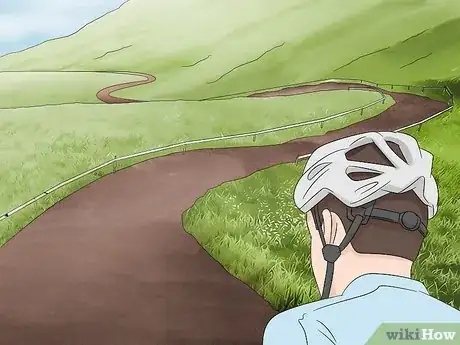
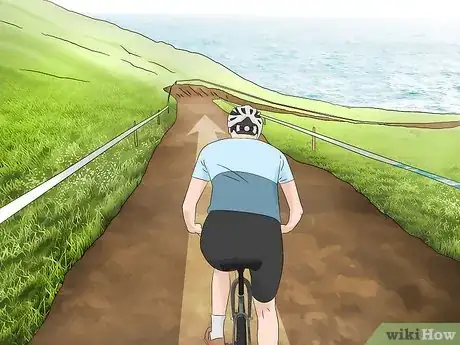
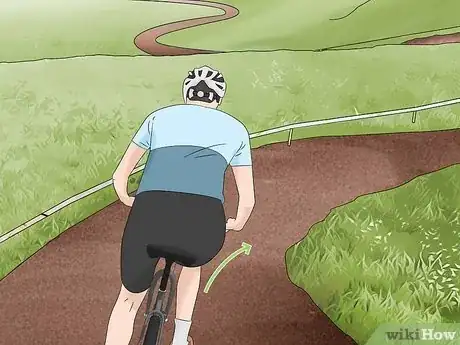


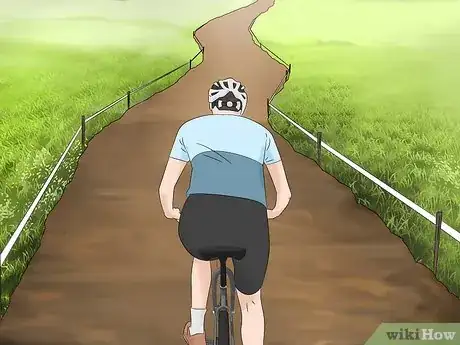
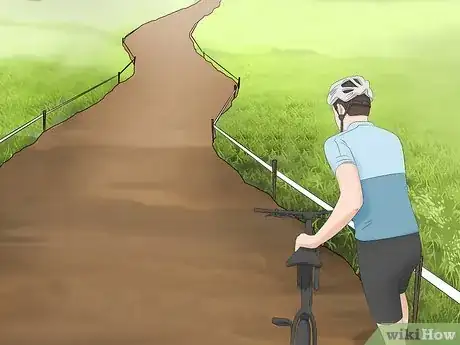
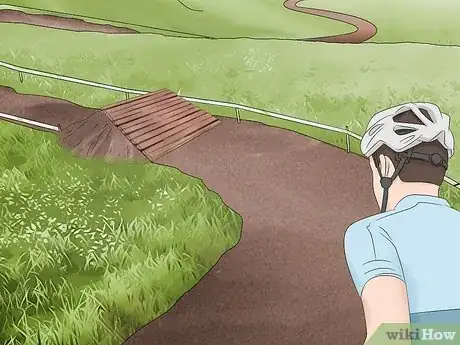
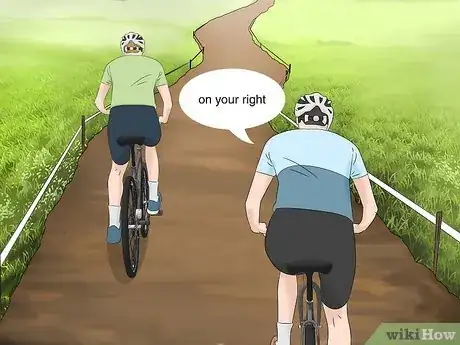

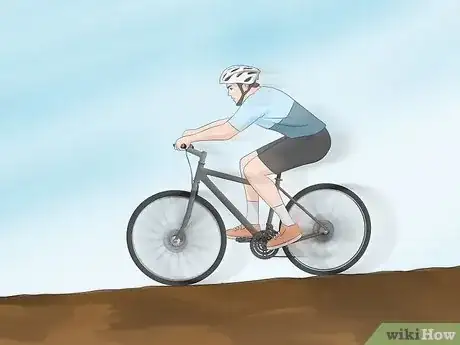
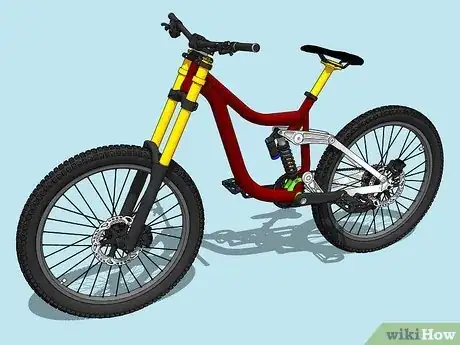
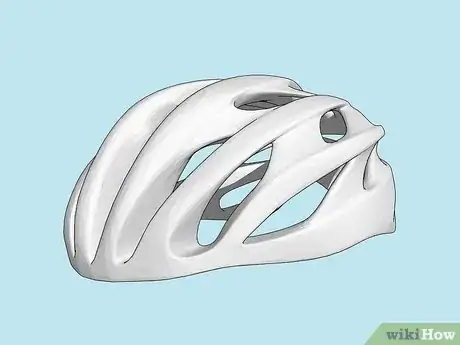
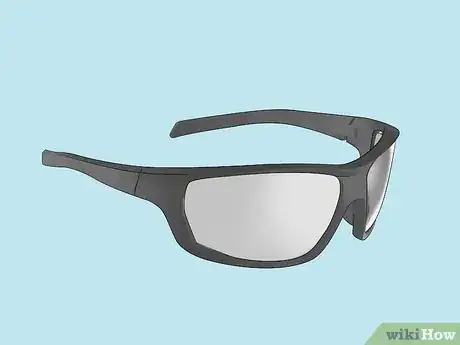
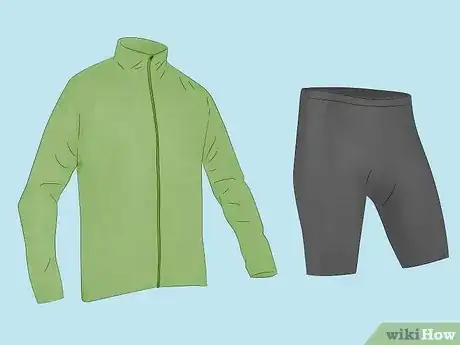
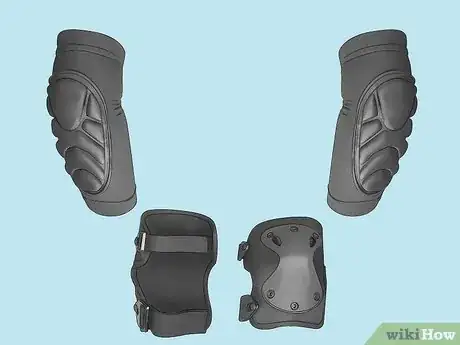
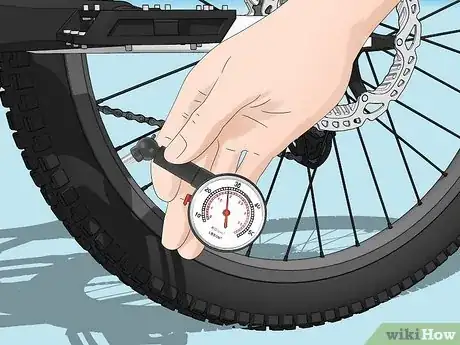


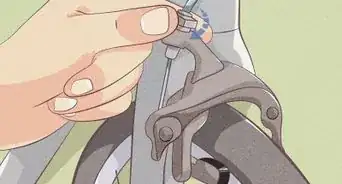
-Step-16.webp)
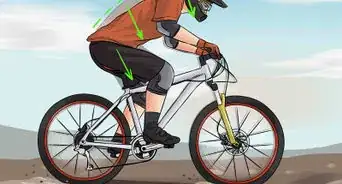

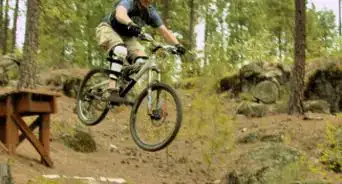
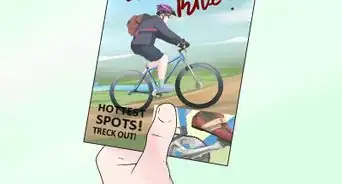








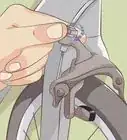
-Step-16.webp)
